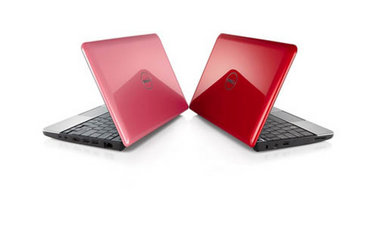The Global Mobile Suppliers Association has confirmed that some 2,137 High-Speed Packet Access (HSPA) user devices – including smart phones, e-readers and netbooks – have been launched into the market by 214 manufacturers.
This figure includes several new products which were announced at the Consumer Electronics Show held in Las Vegas earlier this month.
According to the latest HSPA Devices survey published today by GSA, 861 new devices were launched on the market in the past year alone, representing growth of more than 67pc year on year (YoY).
The number of suppliers grew in the same period by more than 30pc, from 164 to 214 companies.
There are 897 HSPA-enabled mobile phones including smart phones, with 382 new products launched since January 2009, representing 74.1pc YoY growth.
Increase in HSPA-enabled notebooks
The number of HSPA-enabled notebooks grew by almost 52pc in the same period.
Twenty-two HSPA femtocell products and eight HSPA-enabled e-book readers have been launched.
Support for higher data speeds is a major trend in mobile broadband networks and devices. According to related GSA surveys, more than 96pc of WCDMA networks have deployed HSPA, with the majority (more than 52pc) supporting a peak downlink data capability of 7.2 Mbps or higher.
The majority of HSPA devices (51pc) also support a peak downlink data speed of 7.2 Mbps or higher. With 22pc of HSPA network operators committed to HSPA Evolution (HSPA+), GSA confirms that 32 HSPA+ devices are launched by 11 suppliers for peak data speeds up to 21, 28 and 42 Mbps (depending on the specific model).
Support for higher uplink speeds has significantly increased, with 493 HSUPA (High-Speed Uplink Packet Access) devices now launched, an increase of 156pc YoY. Some 219 HSUPA devices (more than 44pc) support or are upgradeable for 5.76 Mbps peak operation, compared to 64 devices in January 2009.
Excluding notebooks and e-book readers, 529 HSPA devices (31pc) incorporate Wi-Fi, which is more than 83pc growth YoY. Some 491 HSPA devices (29pc) incorporate GPS or A-GPS, an increase of more than 112pc YoY, and 188 HSPA devices support mobile TV, covering various standards.

Dell Mini 10 netbooks
Most WCDMA-HSPA mobile broadband networks operate in the 3G/2100 MHz band, except in the Americas, where HSPA systems typically operate in the 1,900 and 850 MHz bands.
Deploying HSPA in lower bands (below 1 GHz) gives a much larger coverage area and a significant reduction in cell sites needed, compared to 2100 MHz, saving OPEX and CAPEX.
Several operators are now deploying HSPA in the 900 MHz band (UMTS900), typically as a complement to 2100 MHz systems, to extend voice, data and mobile broadband services coverage to rural areas; voice quality is also improved.
Indeed, UMTS900 is becoming standard for devices destined for Europe, MEA and APAC markets. Excluding notebooks and e-book readers, 15pc of HSPA devices support UMTS900.
Similar benefits/efficiencies are obtained when HSPA is deployed in the 850 MHz band, as in the Americas, Australia and Asia, for which there is a well-established eco-system, including several hundred user devices. Support for the AWS band (1700/2100 MHz) has also improved considerably, the GSA say.
By John Kennedy
Main photo: The Kindle e-reader